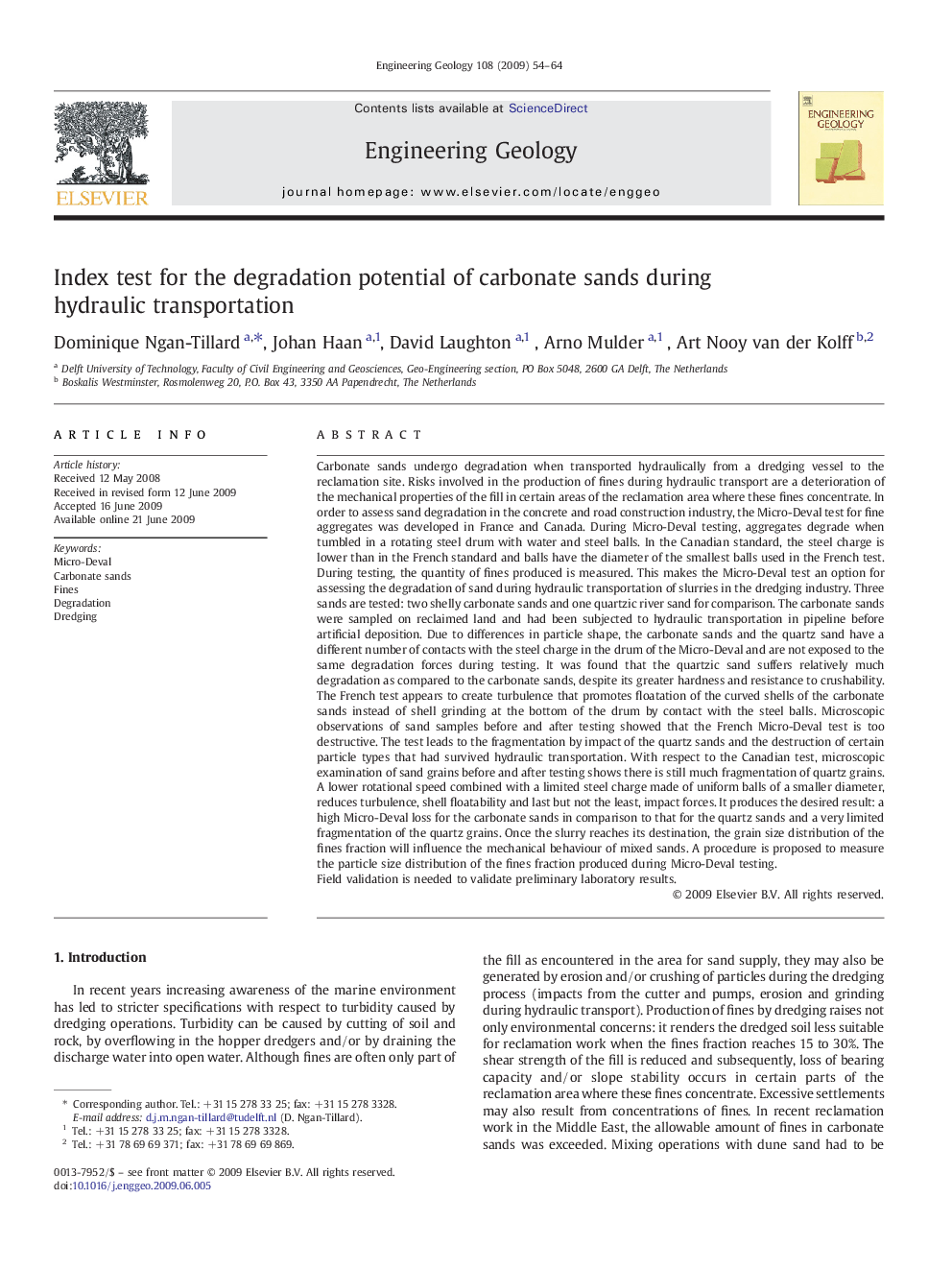| کد مقاله | کد نشریه | سال انتشار | مقاله انگلیسی | نسخه تمام متن |
|---|---|---|---|---|
| 4744438 | 1641875 | 2009 | 11 صفحه PDF | دانلود رایگان |

Carbonate sands undergo degradation when transported hydraulically from a dredging vessel to the reclamation site. Risks involved in the production of fines during hydraulic transport are a deterioration of the mechanical properties of the fill in certain areas of the reclamation area where these fines concentrate. In order to assess sand degradation in the concrete and road construction industry, the Micro-Deval test for fine aggregates was developed in France and Canada. During Micro-Deval testing, aggregates degrade when tumbled in a rotating steel drum with water and steel balls. In the Canadian standard, the steel charge is lower than in the French standard and balls have the diameter of the smallest balls used in the French test. During testing, the quantity of fines produced is measured. This makes the Micro-Deval test an option for assessing the degradation of sand during hydraulic transportation of slurries in the dredging industry. Three sands are tested: two shelly carbonate sands and one quartzic river sand for comparison. The carbonate sands were sampled on reclaimed land and had been subjected to hydraulic transportation in pipeline before artificial deposition. Due to differences in particle shape, the carbonate sands and the quartz sand have a different number of contacts with the steel charge in the drum of the Micro-Deval and are not exposed to the same degradation forces during testing. It was found that the quartzic sand suffers relatively much degradation as compared to the carbonate sands, despite its greater hardness and resistance to crushability. The French test appears to create turbulence that promotes floatation of the curved shells of the carbonate sands instead of shell grinding at the bottom of the drum by contact with the steel balls. Microscopic observations of sand samples before and after testing showed that the French Micro-Deval test is too destructive. The test leads to the fragmentation by impact of the quartz sands and the destruction of certain particle types that had survived hydraulic transportation. With respect to the Canadian test, microscopic examination of sand grains before and after testing shows there is still much fragmentation of quartz grains. A lower rotational speed combined with a limited steel charge made of uniform balls of a smaller diameter, reduces turbulence, shell floatability and last but not the least, impact forces. It produces the desired result: a high Micro-Deval loss for the carbonate sands in comparison to that for the quartz sands and a very limited fragmentation of the quartz grains. Once the slurry reaches its destination, the grain size distribution of the fines fraction will influence the mechanical behaviour of mixed sands. A procedure is proposed to measure the particle size distribution of the fines fraction produced during Micro-Deval testing.Field validation is needed to validate preliminary laboratory results.
Journal: Engineering Geology - Volume 108, Issues 1–2, 14 September 2009, Pages 54–64